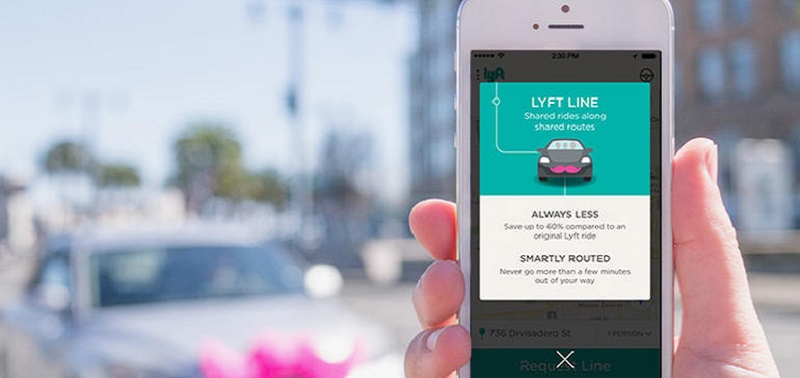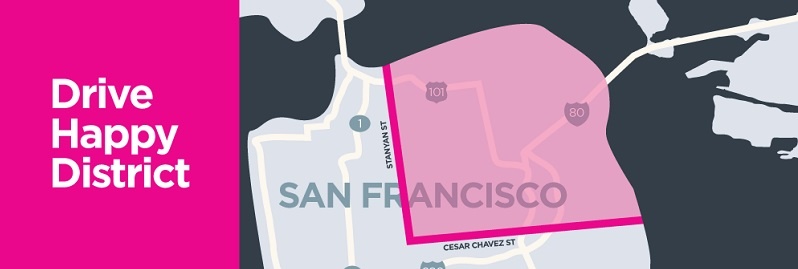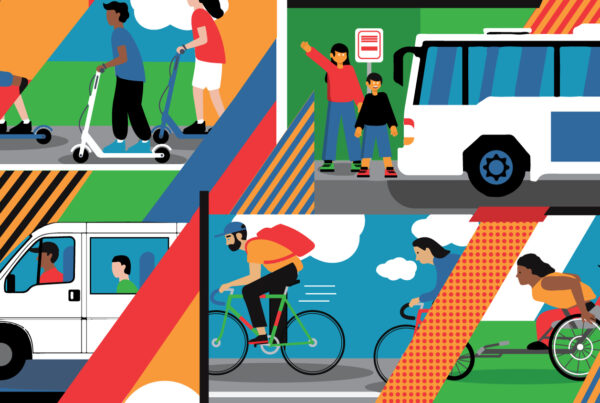Each year, Austin’s SXSW festival brings together the nation’s leading trendsetters to discuss the latest in tech and innovation. Meanwhile, companies stage elaborate promotions – ranging from Tinder pranks to celebrity-laden after parties – to reach this rarified crowd.
Among the products being touted at this year’s SXSW were two especially buzzworthy new services – Lyft Line and UberPool. Festival-goers could catch a Lyft Line at established pickup and drop-off points throughout Austin, or hail an UberPool for the chance to connect with a car carrying tickets to various “VIP” experiences.
Uber and Lyft have heavily invested in these new carpooling products, which are exploding in popularity (Lyft announced at SXSW that the majority of its rides in San Francisco are now via Lyft Line). They are also exciting from a sustainability aspect because they may help take a significant number of cars off the road.
While the concept of carpooling has been around since at least World War II, it has yet to reach critical mass. Experts suggest carpooling peaked in 1980 with about 20 percent of Americans sharing rides to work, a number that’s since dropped to below 10 percent.
The question now is whether companies like Uber and Lyft, with their marketing savvy and far-reaching networks, can finally make carpooling cool. Following is a look at these new services, where and how they’re being used, and what their implications are for the nation’s transportation future.
Service Overview
UberPool and Lyft Line allow customers requesting a ride for one or two passengers to be paired with others traveling along a similar route. Sharing their ride lets passengers experience significant cost savings – as low as a few dollars in some cases – without much inconvenience, since the companies use their industry-leading technology to facilitate the ride-matching in real time.
Once riders have requested an UberPool or Lyft Line ride, they receive that discounted rate even if no matching ride is available. Lyft Line also shows users a guaranteed price before they book the car.
The goal of these new services is to entice multiple passengers to ride together to help reduce demand peaks (although surge pricing can still apply), provide more efficient service and ensure that drivers have less downtime between rides.
Both Lyft Line and UberPool launched in August 2014 in San Francisco and have since expanded operations to New York City and Los Angeles. UberPool has also been available in Paris since November.
Meanwhile, ride-sourcing company Sidecar has also launched its own Shared Rides service, which it claims to have been testing in San Francisco since last May. Sidecar’s service is also available in San Diego, Chicago, Washington, D.C. and Boston.
HotSpots and UberPool Parties
Beyond their efforts at SXSW, both Uber and Lyft have engaged in significant promotional campaigns to help drive awareness and interest for these new products – and help overcome people’s aversion to sharing a ride with strangers.
In San Francisco, Lyft recently ran a “Match Muni” promotion, which offered Lyft Line rides for $2.25 – the same cost as a trip on the city’s public transit system. The company has also introduced Lyft HotSpots program; through which rides ordered at one of several intersections within a designated “Drive Happy District” cost only $3.
Uber has also worked to keep prices low for its carpooling service – there was a little grumbling recently when the company announced UberPool rides would increase from a fixed rate of $5 to a new $7 max price in San Francisco – and established its own designated ride zones.
At these reduced prices, Lyft and Uber’s carpooling services are among the most affordable ways to travel within a city and cheap enough that people might actually use them to commute to and from work each day, instead of driving alone.
It also remains to be seen how these services can complement transit, which will be important to track since evidence shows shared mobility and public transit both benefit from integration.
Concerns
While there is clearly extensive enthusiasm for UberPool and Lyft Line, a few issues may need to be addressed as these models evolve, including:
- Safety: Perceived passenger safety issues have continued to dog Transportation Networking Companies (TNCs) like Uber and Lyft. Adding additional passengers into the mix only further complicates the issue, especially in light of news that riders have started using these carpooling services to look for love.
- Drop-off order: These services route drivers to drop riders off in the order that makes the most sense logistically, not in which they were picked up. Some complaints have arisen from frustrated riders who have initiated trips yet still end up being dropped off last.
- Ratings: There’s no question that adding another rider can affect a passenger’s experience. Could a rude passenger cause his or her fellow passenger to unfairly drop the driver’s rating? The new arrangement has also led some to question whether the drivers’ ability to rate passengers should be extended to passenger vs. passenger.
Exciting Implications
Many in the transportation industry have objected to using the term “ridesharing” to describe Transportation Networking Companies (TNCs), since they often operate more like e-hailing services with a single driver and passenger. Now that’s changing thanks to these new products, which could help make a significant difference when it comes to taking cars off the road, cutting congestion and reducing greenhouse gas emissions.
What else is exciting is that services like UberPool and Lyft Line might be positioned to actually make this new type of ridesharing a reality. Other companies have tried to rollout tech-enabled carpooling in the past but have run into difficulties, since a system needs large pools of both drivers and passengers to deliver service that’s flexible and reliable enough for everyday use. That’s where TNCs, with their immense existing networks – combined with high brand awareness and marketing savvy – may have the wherewithal to actually make tech-enabled carpooling a reality.
To keep up to date on UberPool, Lyft Line and other industry trends, don’t forget to register for SUMC’s regular newsletter.




